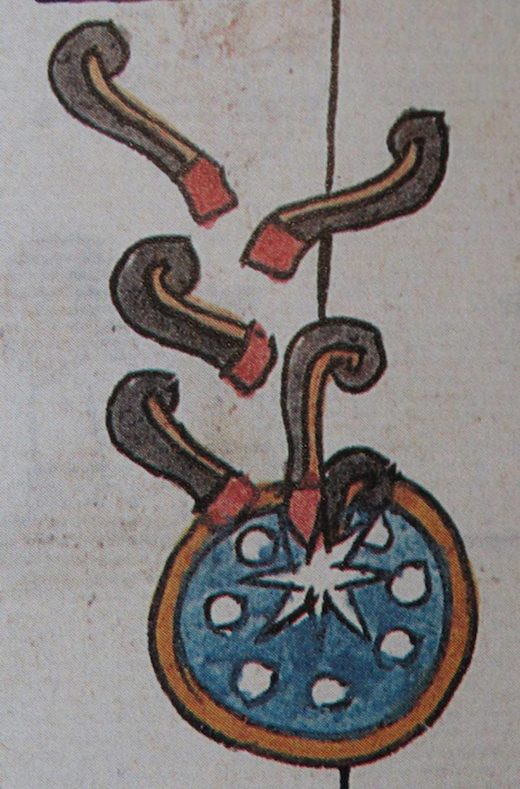
Instead of a puerile response of outright condemnation and censorship, the academic world ought to have invested its energy in a careful and dispassionate evaluation of Velikovsky's individual sources.
Velikovsky's evidence for the 'comet Venus' included the claim that "the peoples of Mexico" passed on "early traditions ..., written down in pre-Columbian days" according to which "Venus smoked". The savant does not appear to have consulted the single primary source he adduced, misspelling the name of an early editor of it. This is the Aztec Codex Telleriano-Remensis annotated by Spanish friars (1553-1563 CE), which contains several illustrations of Venus' 'smoking' as a hemispheric, oval or circular "patch of sky ... with a large central star and smoke volutes arising from the form." The accompanying Spanish text records a series of puzzling contemporary observations of Venus. In the translation of Eloise Quiñones Keber:
"Year of two houses [2 House] and 1533 there was an earthquake. And they show smoke coming from the star they called citlal choloha, which is the one we call Venus, a star they considered to be very important."
"Year of three rabbits [3 Rabbit] and 1534 don Antonio de Mendoza came as viceroy of New Spain. They say that the star was smoking."
"In this year of four reeds [4 Reed] and 1535 the star was smoking."
"This year of six houses [6 House] and 1537 the blacks tried to rebel; in the city of Mexico the instigators were hanged. The star was smoking and there was an earthquake, the worst I have seen, even though I saw many of them in these lands."
"Year of eight reeds [8 Reed] and 1539 ... The star was smoking." As these entries preserved historical observations of Venus between 1533 and 1539 CE, they were neither traditional nor pre-Columbian or shared by multiple "peoples", exposing Velikovsky's wording as disingenuous on all counts - what was he smoking?Yet despite Velikovsky's smoke screen, it is clear that the Aztec chronicler recorded some type of genuine unusual transient event. Ignoring the stated association with Venus, the German ethnologist Ulrich Köhler (1937-) related these reports to sightings of comets. However, although the Aztec are known to have called comets 'smoking stars' (citlalin popoca), the same codex from which the above quotations are taken clearly distinguishes the Venus events from comets (xihuitli) by depicting the latter as snakes and explicitly labelling them 'comet' (cometa). This distinction is significant even if the Spanish word cometa could have meant 'meteor'. Clearly, the cometary angle to this puzzle is all smoke and mirrors.
Read more...



Reader Comments
What the heck have you contributed to the world?